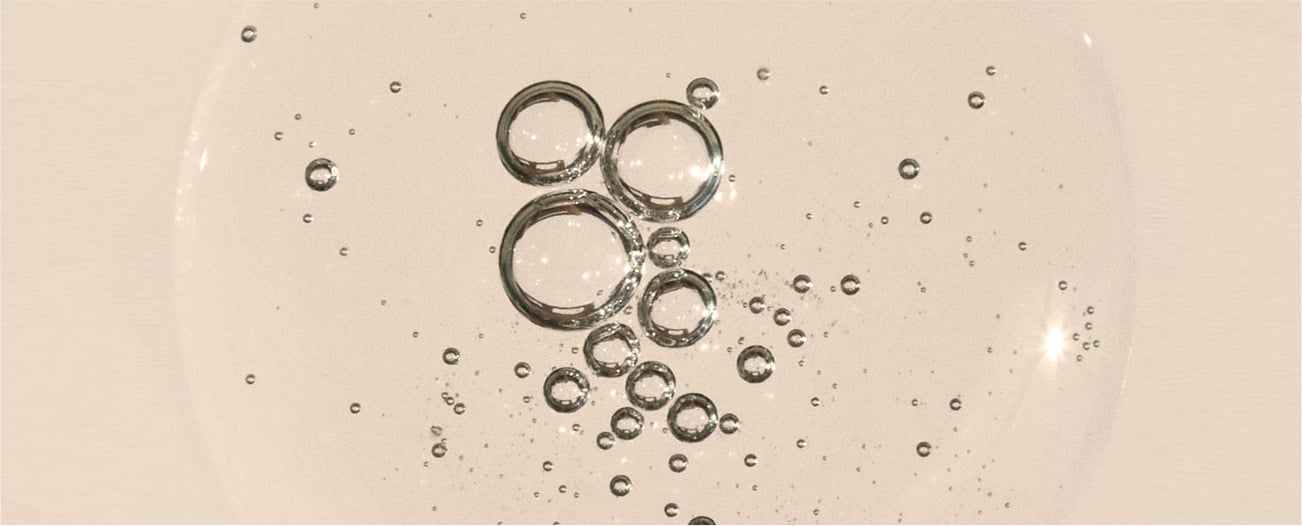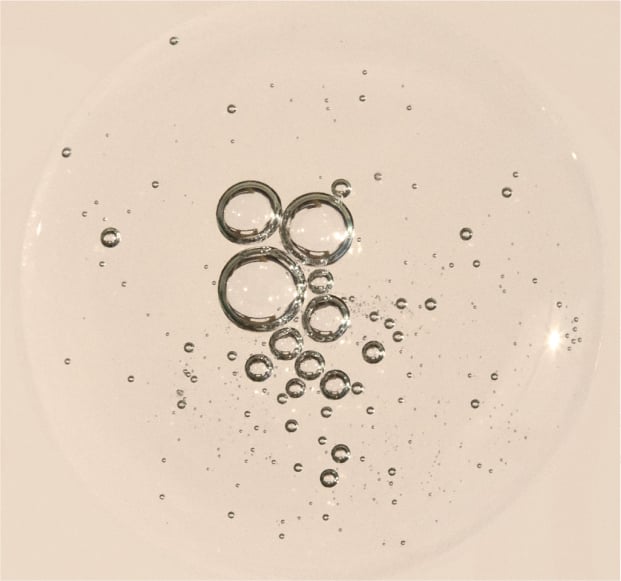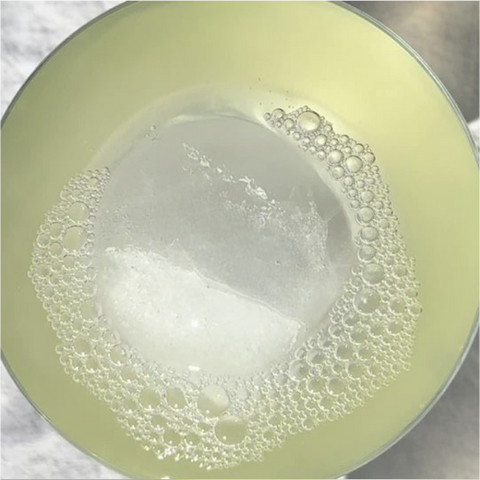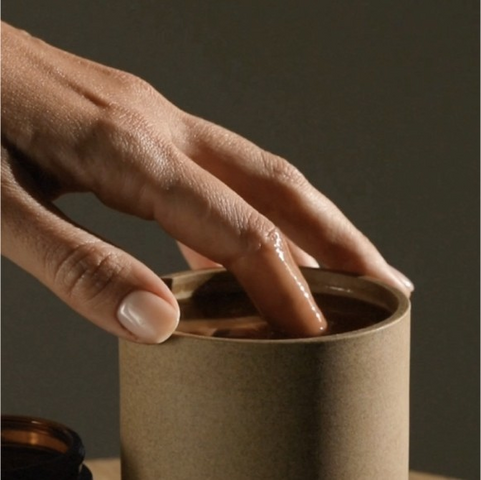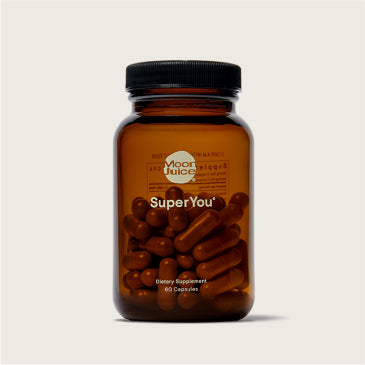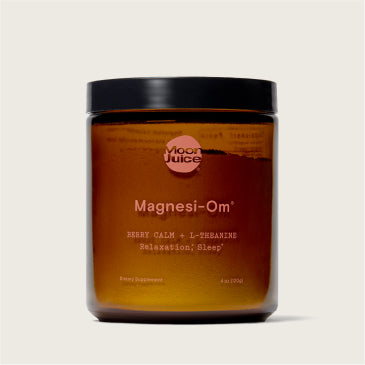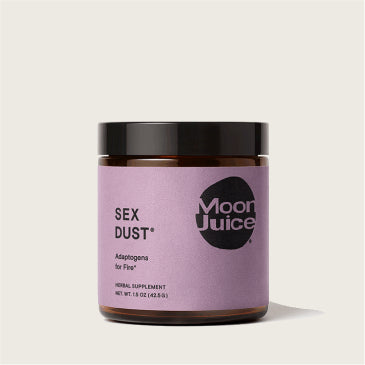Exfoliation is a key step in your skin care routine, important for removing dead skin cells to prevent breakouts and improve texture and tone.
While physical exfoliation is done by manual scrubbing, chemical exfoliation works by way of acids that unglue skin cells and go deep inside pores to clean.
Either can be a good addition to your routine, but there are some differences between them to keep in mind.
If you’re wondering whether to buy a chemical exfoliant vs. physical, here’s a breakdown of what you can expect with each, and which might be best for your unique skin.
What is Chemical Exfoliation?
Chemical exfoliants do the work of exfoliation for you, without the use of an abrasive. Options include formulas with acids like AHAs (Alpha Hydroxy Acids) or BHAs (Beta Hydroxy Acids) that loosen up dead skin cells, unclog pores, and resurface skin. A facial peel at the dermatologist is an example of a professional chemical exfoliation service, while there are also lots of at-home exfoliating masks and toners that are used to balance uneven skin tone and create a clear complexion.
So how do the acids in chemical exfoliants actually work?
AHAs
Some of the most common acids in skin care products are AHAs and BHAs. AHAs, like Glycolic Acid, Lactic Acid, and Citric Acid, are commonly derived from sugar cane and other plant sources. AHAs are water-soluble, meaning they exfoliate at the surface level of your skin. They’re great for reducing visible signs of sun damage and improving the look of fine lines. These AHAs gently break the bonds between dead skin cells, allowing them to become unglued and release from your face to uncover the newer, softer skin. This creates a more even skin tone and skin texture.
BHAs
If you’ve ever used an acne product, you’re probably familiar with Salicylic Acid, a common BHA. BHAs are fat-soluble acids that work on the skin's surface and can penetrate deep inside pores to deep clean. BHAs are also generally gentle enough for sensitive skin due to their large molecule size and anti-inflammatory properties when used in small concentrations.
If you have normal to oily skin or are prone to breakouts, BHAs are a go-to choice for tackling multiple skin concerns while remaining gentle to sensitive skin.
AHA + BHA Blend
If you want to harness the properties of both these acids, an AHA/BHA blend is an easy way to target multiple skin concerns at once. With 25% AHAs and BHAs, Acid Potion is a potent complex that combines Glycolic Acid to break down dead skin cells and help stimulate collagen production, Lactic Acid to help encourage cellular turnover, and Salicylic Acid from Willow Bark to help penetrate and unclog pores.
Because most liquid exfoliants can cause redness, drying, and inflammation, Acid Potion is also balanced with Niacinamide and Reishi mushroom, which help to hydrate and restore the barrier while soothing skin irritation.
What is Physical Exfoliation?
Physical exfoliation might be what you normally think of: a physical scrub, washcloth, facial brush, loofah, dry brush, dermaplaning, even razors — anything you use to physically slough away dead skin. Professional services include treatments like microdermabrasion and dermabrasion.
Unlike its chemical counterpart, which works by dissolving bonds between dead skin cells to lift away debris and soften skin, physical exfoliants sand away the dead, dry layer at the top of the skin’s surface.
The downside to physical exfoliation? Rubbing your skin with rough, abrasive materials isn’t always gentle and in some cases, can even damage your skin. Scrubbing too often with a facial scrub can also cause your skin to become stripped of its natural protective oils, causing an overproduction of sebum and actually leading to more breakouts.
Many physical exfoliants also include plastic microbeads that end up in our ecosystems and pose a threat to wildlife.
For these reasons, you want to be careful if choosing an exfoliant. Seek a natural chemical option, or if you opt for a physical polish, get one that’s gentle with natural ingredients, and go easy when you scrub.
Is Chemical or Physical Exfoliation Better?
Chemical exfoliation tends to be gentler on your skin, reducing the risk of micro-tears that can be caused by a physical abrasive like a harsh scrub. In certain situations, a physical exfoliant can also cause your skin to overcorrect by producing sebum, which again, can be counterproductive if you’re cleansing acne-prone skin. So depending on your skin type, if you have sensitive skin or skin prone to breakouts, you may want to use a chemical exfoliant vs. physical exfoliant.
Let’s discuss some situations where one type of exfoliation might be more effective:
- If you want a deeper clean, opt for a chemical exfoliant like a Beta Hydroxy Acid (BHA). Instead of simply buffing debris off the skin like a gritty exfoliant, a chemical one can sink into skin, cleaning deep inside pores and helping to even out skin tone.
- If you are exfoliating sensitive skin, chemical exfoliants tend to be gentler, whereas a physical exfoliator can aggravate the skin barrier.
- If you want additional benefits, choose a chemical option to increase cellular turnover, stimulate collagen production, encourage elasticity, and allow the other products in your skin care routine to absorb more deeply.
- If you’re acne prone, a chemical exfoliant is the way to go, since these tend to be gentler on bumpy skin and breakouts.
- If you need to wash something off your face while you’re at it, like face paint or a dried clay mask, a physical exfoliant and some elbow grease will help rub it off better than a chemical option.
- If you want to see immediate buffing action, a facial scrub can quickly slough away flakey, rough patches, and polish skin.
- If you want a light massage out of the deal, the manual exfoliation involved with a face scrub can double as stimulation for your face. Just be gentle and avoid sharp scrubs that could potentially scratch your skin.
- If you want even skin, chemical exfoliants tend to work more uniformly than physical ones, which can be trickier to scrub on certain parts of your face and body (like if you wanted to exfoliate your toes, for instance). Just keep in mind that daily exfoliation can be too harsh on the skin so only use a chemical exfoliator 2 to 3 times a week.
- If you’re stepping out in the sun, use a physical exfoliant. It’s important to avoid professional chemical treatments like facial peels if you’re about to be exposed to lots of sunshine. Chemical exfoliants can make your skin more susceptible to sun damage, so always use it at night or follow with SPF.
- If you want brighter skin, while the massage from physical exfoliation can temporarily draw blood to your face for a glow, the benefits of chemical exfoliation will last longer, helping banish dullness and increase skin’s radiance.
The more aggressive your exfoliant method, the less you need to do it. Start with once a week, or up to 3 times a week if you have a liquid exfoliator like Acid Potion. Pay attention to your skin to see how it reacts to ensure you aren’t over-exfoliating your face. Whenever you’re exfoliating, remember to drink plenty of water to replenish hydration and follow up with hydrating and moisturizing topicals for your skin.
Do I Need to Physically Exfoliate if I Chemically Exfoliate?
You don’t typically need to do both. Because you can overdo it when it comes to exfoliation (particularly physical exfoliation when it comes to at-home applications), it may be best to start with a chemical exfoliator and see how your skin reacts over time, then add a second type only if you feel your skin needs it.
All skin types, including acne-prone and sensitive skin, will do well with a chemical exfoliant, and because of the added benefits of exfoliating with acids, acids may be the best choice if you’re looking for a minimalist routine.
Sign Up, Nerd Out
Get wellness tips, education, and recipes
delivered straight to your inbox.
Get wellness tips, education,
and recipes delivered
straight to your inbox.
Takeaways
Regular exfoliation is an important step in your skincare routine that can help clear dead skin, smooth skin texture, prevent breakouts, increase cellular turnover, and prime your skin to better absorb the products that come next. When choosing an exfoliator, you want to be careful to pick one that isn’t going to scratch your skin barrier or cause damage.
A chemical exfoliator like an AHA + BHA blend can offer additional benefits, like stimulating collagen production and soothing the skin, without causing damage from micro-tears. It will go beneath the surface to deeply, diligently unclog pores and dissolve dead skin. Chemical exfoliators also tend to be gentler for sensitive or acne-prone skin.
Whichever exfoliant you choose, be careful not to over-exfoliate. Avoid exfoliating skin that’s recently been torn, wounded, or sunburnt to avoid further damage.
If you incorporate a chemical exfoliant into your weekly (or up to 3x weekly) routine, you should start to notice smoother, softer, and more radiant skin.
Sources
- US Food and Drug Administration, Alpha Hydroxy Acids https://www.fda.gov/cosmetics/cosmetic-ingredients/alpha-hydroxy-acids
- National Library of Medicine, An antiaging skin care system containing alpha hydroxy acids and vitamins improves the biomechanical parameters of facial skin https://www.ncbi.nlm.nih.gov/pmc/articles/PMC4277239/
- US Food and Drug Administration, Beta Hydroxy Acids https://www.fda.gov/cosmetics/cosmetic-ingredients/beta-hydroxy-acids

